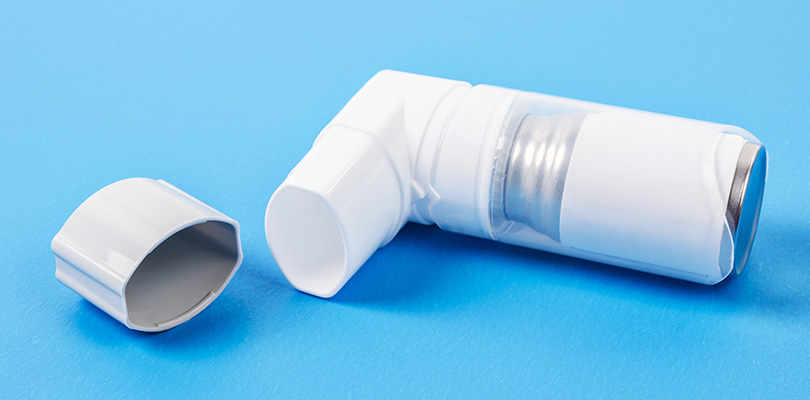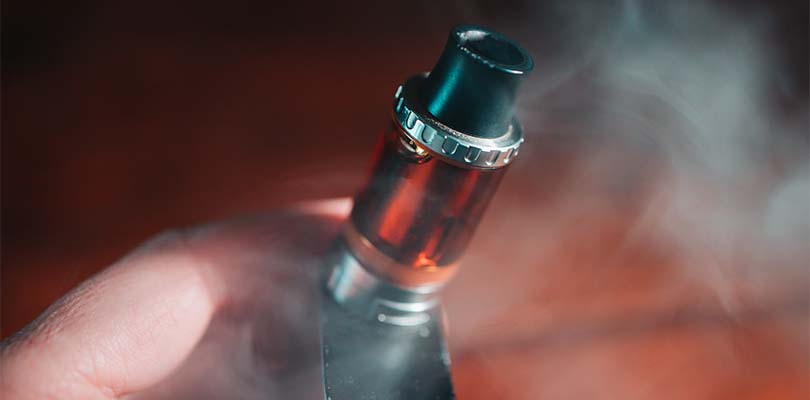Inhalers for COPD
COPD often causes symptoms including shortness of breath, coughing, and wheezing. Currently, COPD cannot be cured, but medications may decrease symptoms.
Inhalers are often used to treat symptoms of COPD. Some people with COPD may be prescribed inhalers that are taken every day. In other cases, inhalers may only be used as needed when COPD symptoms develop.
Several types of inhalers for COPD are on the market. Different medications are also sold under various name brands. With all the inhaler options, it can become confusing. It’s vital for people with COPD to understand what their inhalers are prescribed for and how to take each one correctly. Continue reading to learn more about inhalers used to treat COPD.
Quick-Relief Bronchodilators
Inhalers are available to treat sudden symptoms of COPD, such as chest tightness and wheezing. Inhalers to treat sudden symptoms are classified as quick-relief or fast-acting bronchodilators.
This type of inhaler works rapidly to relax the airways and allow air to flow in and out of the lungs easier. Although fast-acting inhalers work quickly, the effect only last short-term.
There are a couple of different types of quick-relief inhalers including bets-2 agonists and anticholinergics. The medication is classified depending on which receptors in the body they target.
The most common quick-relief inhalers for COPD include:
Albuterol: Albuterol is sold under different brand names including Proair and Ventolin. It is available in an HFA, which is an inhaler device that uses a propellant to deliver the medication. An HFA inhaler requires coordination to actuate the device and inhale. To minimize user error, it’s helpful to use a chamber device called a spacer.
Albuterol is also available in the form of a dry powder inhaler and is sold as a RespiClick inhaler. The device is breath-actuated and does not require the same level of coordination as an HFA inhaler. It does require a fast, deep inhalation, which can be difficult for some people with severe COPD symptoms.
Levalbuterol: Levalbuterol in another type of quick-relief bronchodilator. It works similarly to albuterol by relaxing the smooth muscles of the airways. It has a slightly different chemical makeup than albuterol and may have fewer cardiovascular side effects. Levalbuterol in available in an HFA inhaler.
Ipratropium: Ipratropium in a quick-relief anticholinergic bronchodilator, which is also sometimes used to treat COPD. Ipratropium is available in an HFA inhaler. It is also available in combination with albuterol in a Combivent Respimat inhaler.
Possible side effects of quick-relief inhalers for COPD include lightheadedness, shakiness, and increased heart rate. People with COPD that also have heart conditions should discuss possible cardiac side effects with their doctor to determine which bronchodilators are right for them.
Long-Acting Bronchodilators
Long-acting bronchodilators work similarly to quick-relief inhalers and dilate the airways. The main difference is long-acting bronchodilators do not work fast, like quick-relief inhalers. Instead, they have a slower onset but last longer.
Small steps, reasonable expectations, and a healthy mindset are the keys to making New Year's resolutions for people with COPD.
Usually, long-acting bronchodilators are taken as a maintenance medication once or twice daily to prevent symptoms. They are not used in place of a fast-acting inhaler.
Different types of long-acting bronchodilators are available to treat COPD including long-acting beta-2 agonists and long-acting muscarinic antagonist. The side effects of long-acting bronchodilators may vary depending on the classification of medication but can include increased heart rate, dry mouth, and urine retention.
A few of the most common long-acting bronchodilators include:
- Tiotropium.
- Aclidinium.
- Salmeterol.
Corticosteroids
In the past, corticosteroids were often prescribed to treat COPD. But the routine administration of inhaled corticosteroids is usually not recommended for people with mild to moderate COPD.
According to the American Thoracic Society (ATS), the inflammatory process in people with COPD is different than in people with asthma. Studies by the ATS indicate that inhaled corticosteroids are often ineffective in decreasing inflammation in COPD and may cause side effects, such as bone loss, weakened immune system function, and hoarseness.
But there may be instances in which COPD symptoms are severe and are not controlled with long-acting bronchodilators. In some cases, corticosteroid inhalers may be prescribed.
Corticosteroids are available in an HFA inhaler and a dry powder. Corticosteroids are also combined with long-acting bronchodilators in a combination inhaler to treat COPD.
Common corticosteroids inhalers to treat COPD include
- Beclomethasone dipropionate.
- Budesonide.
- Fluticasone.
How to Use an Inhaler for COPD
It’s important to use your inhaler correctly and as prescribed by your doctor. Consider the following tips:
- Read your package insert. With the wide variety of inhalers for COPD available, there is not one set of instructions that work for all inhalers. For example, certain inhalers require priming before use, others don’t. Some inhalers require a rapid and forceful inhalation while a slow inhalation is needed for other inhalers. It’s essential to read the package insert that comes with your inhaler before use.
- Determine if you need to prime your inhaler. Different inhalers require priming before use. Priming is done to get the inhaler ready for use. It ensures the correct dosage of medication is released. Priming is different based on the device, so always read the instructions for your inhaler.
- Use a spacer with an HFA inhaler. If you use an HFA inhaler for COPD, use a spacer to get a better dose of medication into the lungs.
- Exhale completely before using your inhaler. Regardless of which type of inhaler you use, you should exhale all the air out of your lungs before using the inhaler.
- Hold your breath for ten seconds or as tolerated. After taking a dose of medication through your inhaler, hold your breath for about ten seconds if tolerated. Holding your breath helps with the absorption of the medication.
- Keep track of side effects. If you experience side effects with any of your inhalers, do not hesitate to talk with your doctor. Adjustments in medication may be possible.







